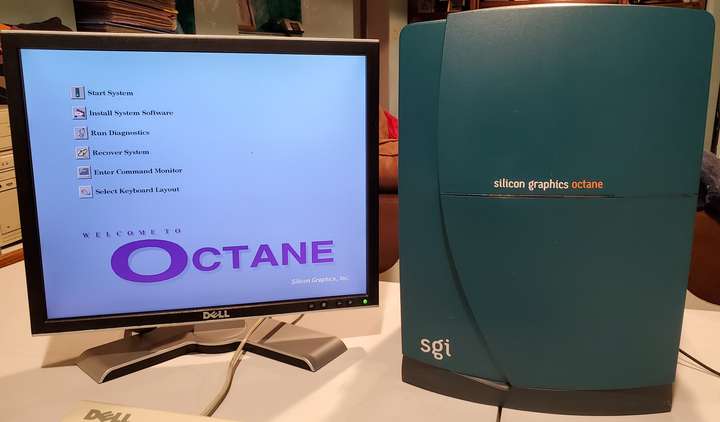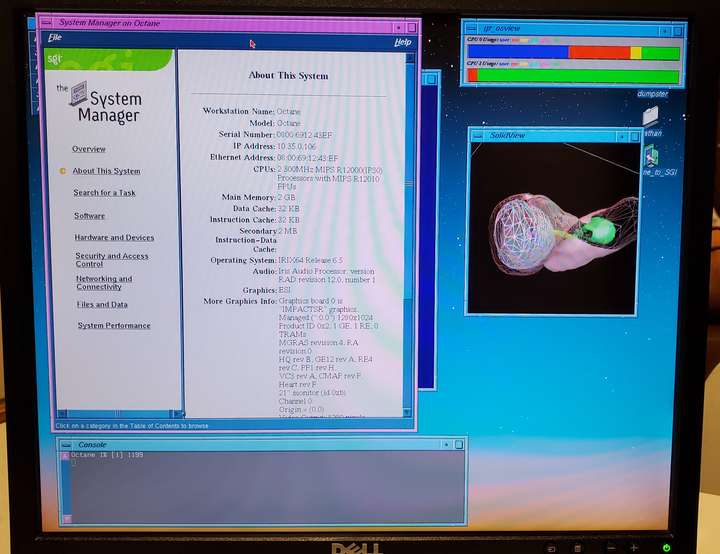
Octane
Overview
The Octane was SGI's replacement for the Indigo 2. It is a powerful workstation with impressive graphics capabilities. The Octane could have 2 CPUs, and many different expansion cards installed into its proprietary XIO bus. The Octane is a modular design with the XIO expansion cards and the system board connecting to a front plane. The heart of the Octane's design is the Crossbar switch, which allows high speed communication between the CPU and the expansion cards. The main connection to the front plane uses very fragile compression connectors, which have gold fingers that press onto the PCB. You should never touch these connectors. Even brushing against them could damage them.
I have two Octanes but currently only one is fully working. The Octanes I have are later models, so they have the new SGI logo on the front and updated "cherokee" power supplies. The working octane has a system board with 2x 300 MHz R12000 CPUs, 2GB of RAM, and ESI/SE graphics. Irix 6.5.30 is installed onto a 18GB hard disk.
The non-working system has 1x 300 MHz R12000, 1GB of RAM, and EMXI/MXE graphics. The issue with the non-working system is the graphics board. I get a kernel panic as soon as X tries to initialize the graphics hardware. I've tried running the board without the TRAMs installed, which makes the board an SSE, with no luck. I even tried swapping the compression connector from an Octane personal video with no change, since the connector on the MXE board looked a little dirty.
The performance difference between the Octane and my Indigo 2 is significant. The Octane compiles software very quickly and is very snappy to use.

